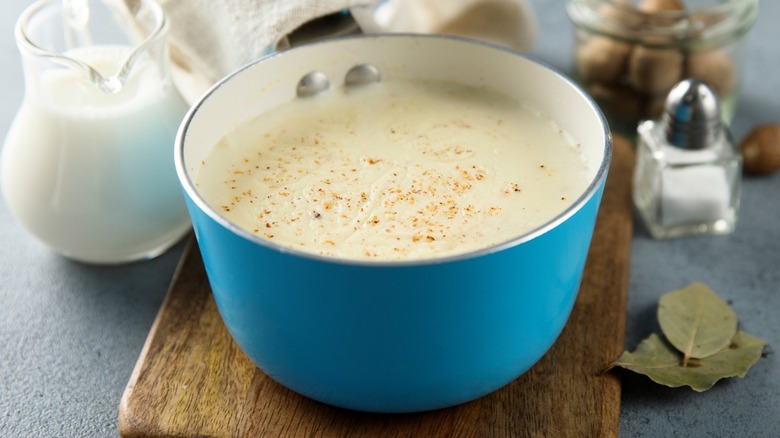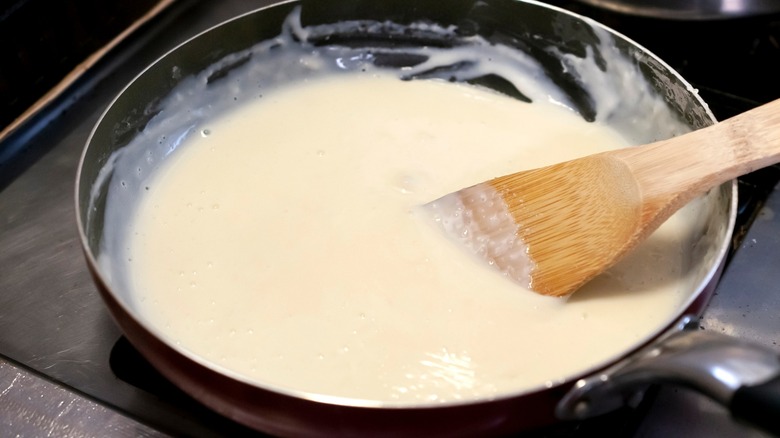Why You Should Cook Béchamel On A Griddle
When it comes to making béchamel sauce, the recipe itself couldn't be easier, but there are several factors every seasoned veteran or beginner cook needs to remember. The first is to use measurements for the roux instead of guessing. Even if you've made it hundreds of times, too much or too little of your flour or fat could ruin the recipe. There's been some debate over what temperature milk should be used, with some insisting that warm milk creates the best béchamel sauce, but others saying that the colder the milk, the better.
One of the mistakes everyone makes with béchamel is pouring the milk too fast: Patience is key when making the smooth white sauce. Add no more than half a cup at a time, whisking it in and adding more as it starts to become pasty. Lastly, consider an indirect source of heat instead of using a pan directly over the burner. Instead, put the pan on a flat-top griddle, or any griddle you have. The first thing that comes to mind when we think of griddle cooking is pancakes, eggs, and meats, but the logic behind cooking sauce on it makes sense. This method gives you more control while heating the sauce, and can whisk the bottom layer into the upper portions of the sauce with less risk of burning it. While the cooking may take longer, you're guaranteed a perfect béchamel sauce.
Low and slow is key for cooking sauces
If using a flat-top grill to cook your sauces, broths, soups, or dips, some pans work better than others, due to griddles often reaching temperatures above 500 degrees. It's suggested that cast iron and ceramic are excellent options for cooking on low heat on a griddle, and stainless steel is great on griddles as long as the temperature doesn't get too high. Copper is also a good choice for cooking over high heat, but is not recommended for cooking on low heat. Dutch oven pans are adequate for cooking sauces on a griddle, but because of their size, it's recommended that you heat the pan until it's warm before adding the ingredients.
Cooking low and slow with indirect heat is a proven method that is often used for melting foods or creating sauces that can become thick or clotted easily. We all know the sticky, messy result of melting chocolate with too much heat too fast or the curdling that results from trying to cook sauces at high temperatures. The added benefit of cooking sauces with the low and slow method using indirect heat is also more flavor because the dish's ingredients have more time to mingle.

